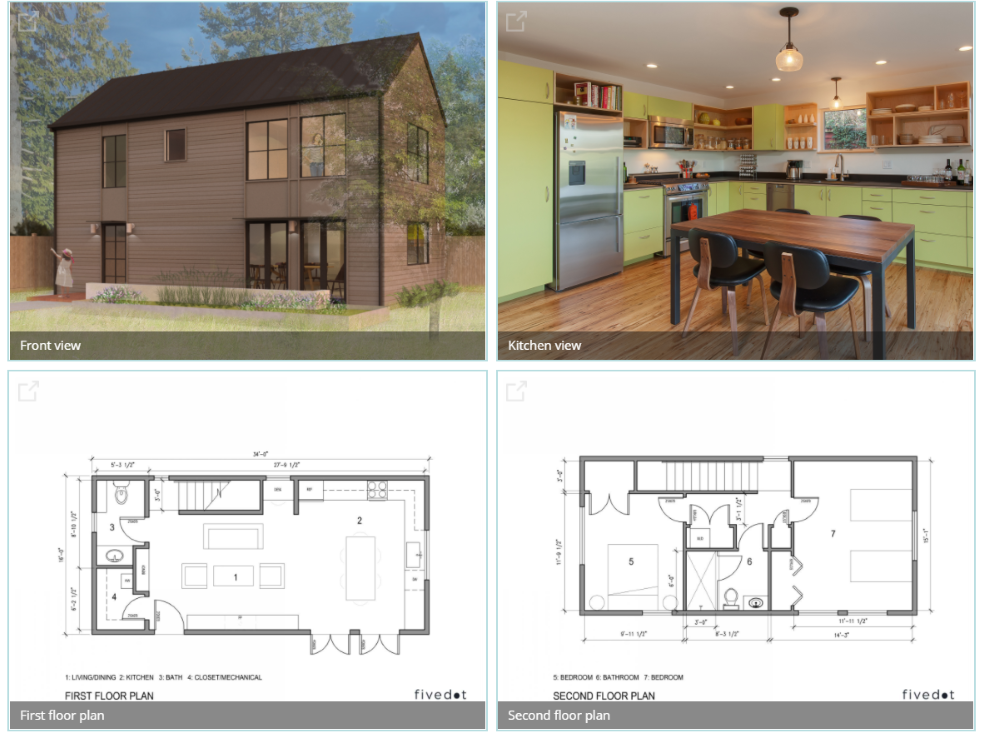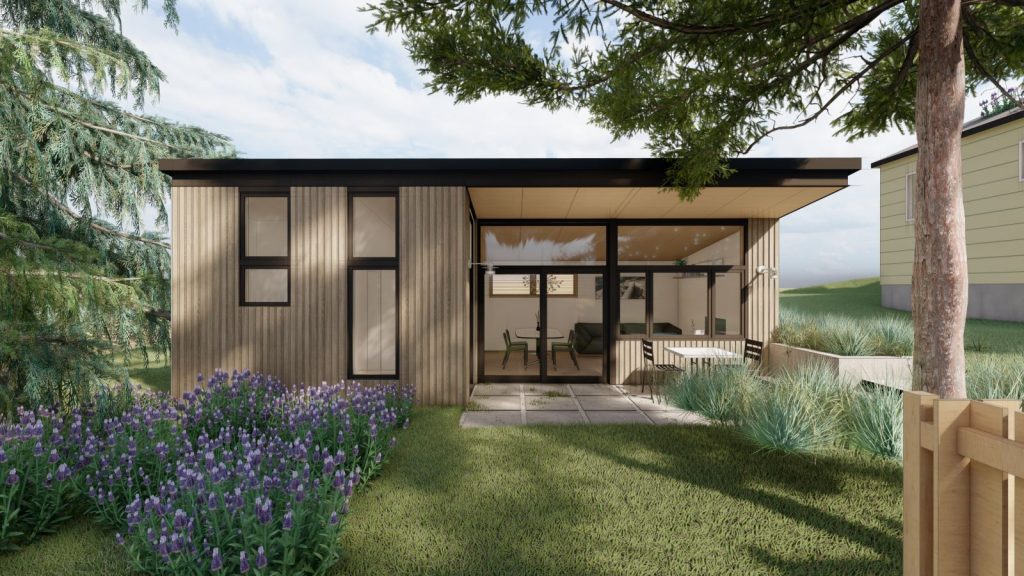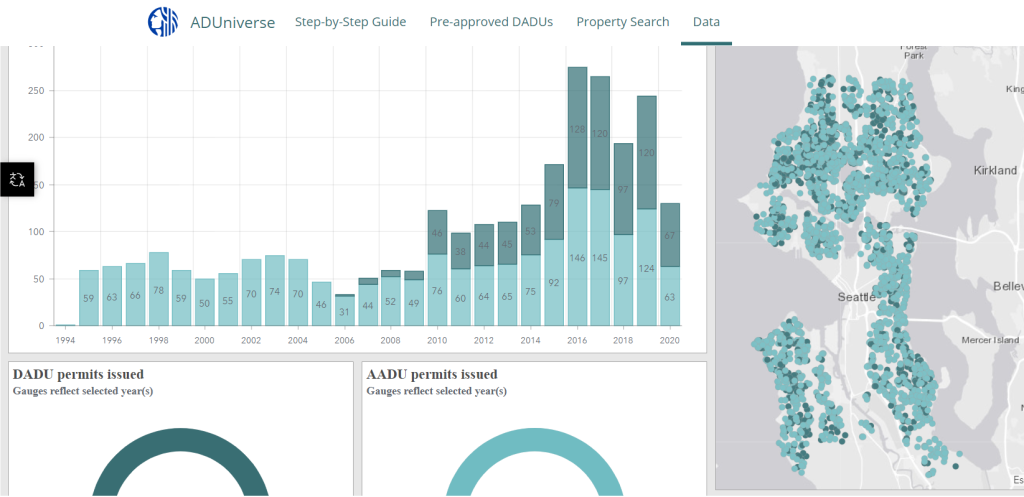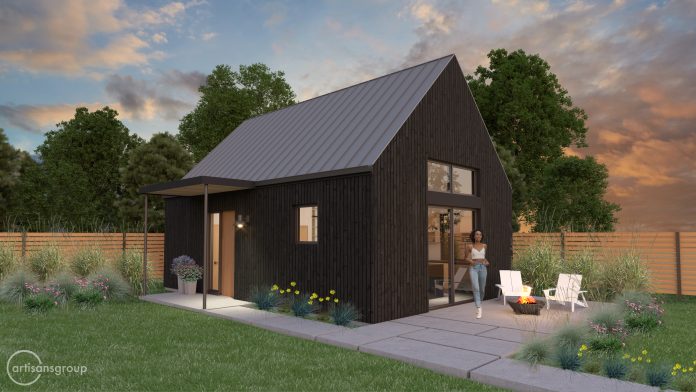On Tuesday, the City of Seattle rolled out a website called ADUniverse that will offer 10 pre-approved accessory dwelling unit (ADU) designs and other information to help homeowners navigate the process of adding a backyard cottage or mother-in-law apartment (or two) to their lot.
“In addition to providing an easily accessible design option, the pre-approved designs will shorten the permitting process by at least 2-6 weeks and save homeowners about $1,500 in permit fees,” the Mayor’s office said in a press release. Nick Welch, senior planner with the Office of Planning and Community Development (OPCD), said that time and monetary savings could be even greater in some cases by avoiding costly corrections to initial designs.
Last summer, the Seattle City Council passed ADU reform–but only after a lengthy delay caused by a Queen Anne Community Council appeal forcing the City do a full Environmental Impact Statement (EIS) and then appealing the EIS by ironically arguing under the State Environmental Policy Act (SEPA) that more parking was needed, a case the Hearing Examiner ultimately rejected. The new law allows two ADUs on large lots and makes ADUs feasible on more lots than previous rules. Sightline Institute declared Seattle’s new ADU policy, which former Councilmember Mike O’Brien had shepherded, the best-in-the-nation.
After signing the law, Mayor Jenny Durkan directed City agencies to identify strategies to reduce permitting times and costs. The City launched an effort to get pre-approved ADU designs, appealing to the architect community and originally floating compensation for those designs as a possibility. Ultimately, the City did not offer compensation when they put out the call in December, deciding it was enough that firms get their name out there and get the $1,000 in royalties each time their design is built.
Architect Mike Eliason opined that the City’s pre-approved plan effort was built on uncompensated labor in a column in The Urbanist. Welch said the City got an overwhelming response with 165 designs submitted–even without upfront compensation for architects. All the designs will appear on the site to recognize their participation in the process and perhaps drum up business for those not so lucky to win.
“All architectural plans–ranging from a studio under 300 square feet to a 1,000-square-foot two-bedroom–will be available direct from the designer for $1,000 or less,” the Mayor’s release said. “Cottage designs have been reviewed against codes for the structure and its energy use; however, homeowners remain responsible for permits and inspections related to zoning, site preparation and the foundation, utility connections, and other site-specific requirements.”

In other words, though the design will be pre-approved and $1,000 or less, a considerable amount of fees and hoops to jump through remain, including a site plan. Eliason pointed out the architectural design costs associated with an ADU are typically on the magnitude of $15,000 all told. Welch said the firms with a pre-approved design would recoup the $1,000 in royalties when their designs are built, plus they may stand to get the business from the homeowner to get the site plan and everything else in order, adding more compensation for their work.
The pre-approved plans were selected with affordability and sustainability as major factors of consideration. A panel of volunteers from the Seattle Design Commission, Seattle Planning Commission, Construction Codes Advisory Board, and the City’s design review boards identified 10 designs for permitting by the Seattle Department of Construction and Inspections (SDCI). “The designs were selected based on estimated cost of construction, accessibility, green building principles, and compatibility with historical architecture,” the Mayor’s release notes. The City had hoped to release the pre-approved designs sooner but the coronavirus pandemic threw a wrench in that plan, officials say.
The winning firms were CAST Architecture, Magellan Architects, Fivedot Architects, Artisan Group, Ahouse Studio, Urban Cottage Prefab and Wood Studio, Yes Architecture, Mobile Office Architects, Bohlin Cywinski Jackson, and Shape Architecture.

“Our technical staff have completed reviews on a range of cottage designs and sizes, which will reduce the time it takes to get started on construction,” SDCI Director Nathan Torgelson said in a statement. “Anyone thinking of adding a backyard cottage now has access to better information and an immediate head start on obtaining a permit.”
A pre-approved design can’t do anything about utility fees, however, which do add a significant cost. One large fee is the sewer capacity fee levied by King County, but Welch said the City worked with the County to make it a little bit lower so that ADUs aren’t paying as much as full-sized single-family homes. That change took effect about a year ago. The sewer hookup fee had been $7,000 paid in installments over 15 years, but the City convinced the County to lower that a bit for ADUs.
What the ultimate effect pre-approved ADU designs will have on the affordability of housing may be fairly incremental. It’s more of a middle-income housing solution, but affordable housing providers may be able to use ADUs here and there. The Mayor is optimistic it can make a dent.

“While in the middle of global health pandemic, we are even more aware that we continue to face an affordability and housing crisis. It’s our responsibility to use every tool available to increase housing options in every part of our City. While the City expects to build more than 6,600 new affordable homes by 2023, we need to ensure we have range of housing options for everyone,” Mayor Durkan said. “These new designs will help streamline permitting issues, allow homeowners to provide alternative housing choices to renters within their communities, and create options for residents to age in place or live with loved ones.”
Check out the new ADUniverse website if you’d like to see for yourself. It includes a parcel viewer that can help determine if a backyard cottage can fit on your lot. There is also a “Data” section that shows historic ADU permit activity citywide. Activity hasn’t spiked much yet from ADU reform passage, but it may soon as homeowners get their plans together.
Doug Trumm is publisher of The Urbanist. An Urbanist writer since 2015, he dreams of pedestrian streets, bus lanes, and a mass-timber building spree to end our housing crisis. He graduated from the Evans School of Public Policy and Governance at the University of Washington in 2019. He lives in Seattle's Fremont neighborhood and loves to explore the city by foot and by bike.



